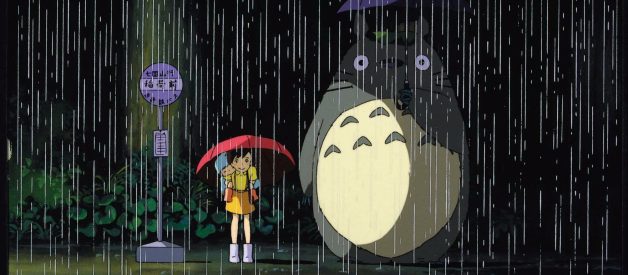What is a Totoro? For one of Japan?s most iconic characters, its nature is rather mysterious.
People have created all kinds of theories to explain these woodland creatures. Some claim Totoro is based off of specific Japanese folk creatures like Koropokkuru. And a few years ago, a wild conspiracy theory categorized him as a ?god of death.? This theory tried to turn a delightful children?s movie on its head, and why? Because someone completely missed what Miyazaki was laying down.
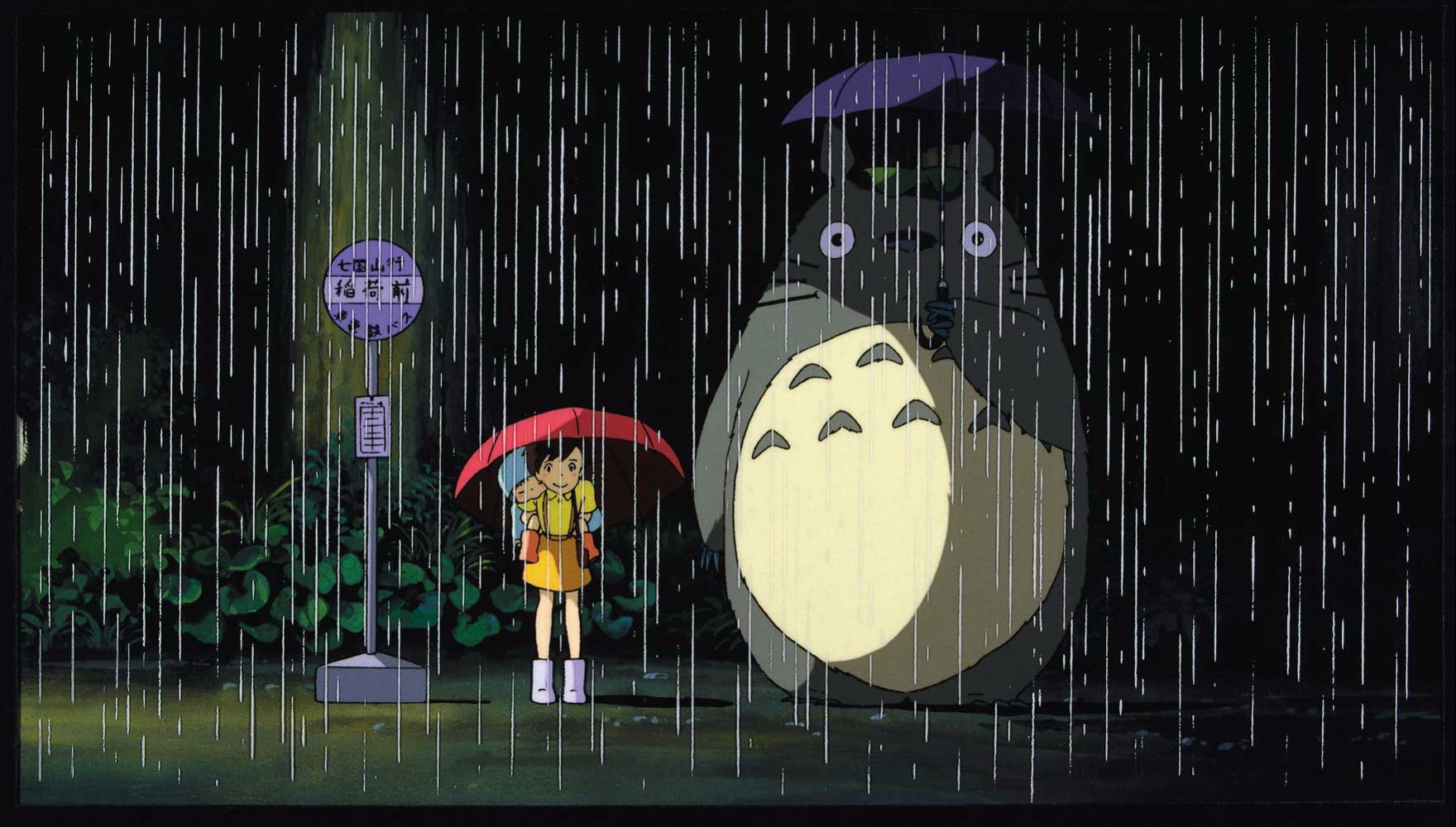 The iconic image from ?My Neighbor Totoro.?
The iconic image from ?My Neighbor Totoro.?
It is apparent to me that people from ?the west,? myself included, have trouble understanding basic principles of Japanese culture, which would clear up the confusion about Totoro. If anything, our love for Studio Ghibli and Hayao Miyazaki?s work should encourage us to explore this culture and the way the Japanese traditionally understand the world.
So let?s start then.
Many of Miyazaki?s films, including Totoro, have Shinto themes. Shinto is animistic, meaning that every thing has a sort of living essence. A river. A signpost. An animal. All of these things have a spirit. And when you think about it that way, it makes sense that there are so many Japanese words for different kinds of ?spirits? (although I use this term loosely). Since the English language has been dominated by monotheistic beliefs for so long, our vocabulary is pretty slim: fairy, ghost, spirit, the-weird-lights-in-Brave. Any single-word comparison simply won?t do.
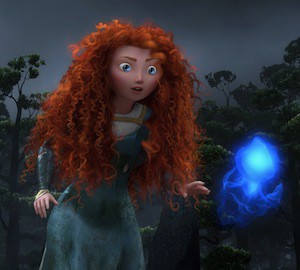 The ?weird light? from the movie ?Brave.?
The ?weird light? from the movie ?Brave.?
It is also important to note some differences in animism and monotheism. Namely, in the Abrahamic religions, God is a transcendent, omnipotent being. Its sort of: ?He?s up there in the clouds and knows everything.? Animism isn?t like that. The divine is actually in the world and it isn?t all-knowing or all-powerful. In fact, it isn?t an ?it.? There are many multiple beings in Shinto and they range in power and influence.
The Japanese term to describe many animistic beings is ?kami.? From what I understand, it is a pretty large umbrella term. According to the page on Shinto on BBC Religions, kami is both that ?life essence? that is in everything as well as the gods (Amaterasu), natural objects (a mountain), natural forces (storms), animals (yes, your beloved dog), and even the souls of humans who lived particularly good lives. A being that is a kami has a large influence on humanity, and these beings are often worshipped at shrines all throughout Japan. According to Harvard University?s description, the kami must be influential to human life and awe-inspiring, thus they are worshipped as kami. (So?I take it back about Fido?)
If kami are influential and worshipped at shrines, then ?yokai? are not really either of those things. Again, the best English has is ?goblin? or ?monster,? and many translations use those shallow terms. But essentially, yokai seem to be smaller beings that exist in more specific ways than kami.
Let?s go back to that mountain. If the mountain is a kami, then other objects on the mountain are their own kami: there is a kami for the river on the mountain, and there is a kami for the trees growing on it, too. Therefore, a yokai is the spirit that lives in and guards the trees. The yokai is the spirit who hangs out by that river for kicks. And there would be many other yokai that live on that mountain. These beings have existed in Japanese folklore for centuries.
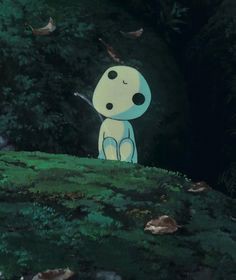
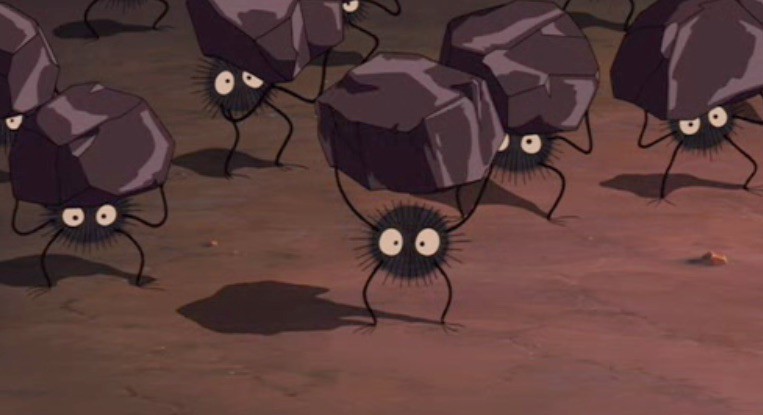 A kodama from ?Princess Mononoke? and the soot spirits from ?Spirited Away.?
A kodama from ?Princess Mononoke? and the soot spirits from ?Spirited Away.?
Probably the most famous yokai in Miyazaki films are the soot spirits in Sprited Away and My Neighbor Totoro or the ?kodama? in Princess Mononoke or, again, Totoro. And these kodama are interesting in their own right. But many yokai look particularly strange. In this youtube video, ?A Yokai by Any Other Name,? Joe discusses yokai in more detail. He also looks at the yokai found in the movie A Letter to Momo.
In the video, Joe mentions a couple other terms for yokai: ?choshizen,? mysterious natural phenomena, ?henge,? which are shape-shifters, ?yurei,? spirits of the dead, and ?kaiju,? which are strange creatures with power. These are just four general categories. There are literally thousands of kinds of yokai, and just as many kami.
So is Totoro a yokai? It isn?t found anywhere in Japanese folklore, so technically no. (And I wouldn?t want to compare Totoro to Godzilla as a kaiju, anyway.) Is Totoro a kami? While it does interact with Mei and Satsuki, Totoro doesn?t seem to care much about humans. So what exactly is Totoro?
Here?s the hard truth for those of us fervently trying to understand this character: Totoro is completely fictional. It did not exist before Hayao Miyzaki made it up?out of his brain. When you look at Japanese myths, folklore, and culture, Totoro does not exist before the film came out in 1988. My Neighbor Totoro is, in fact, a fantasy movie and not so much realistic fiction.
But that?s the best part. When you understand the world that Miyazaki comes from, with inherent beliefs in kami and yokai, you can appreciate Totoro for what it is. Like a yokai, Totoro is a strange creature with strange attributes (and a strange catbus friend). Like a yokai, Totoro hangs out in trees and actually helps them grow. Like a kami, Totoro helps Mei and Satsuki throughout the movie. Their father even goes to the shrine at the tree where Totoro lives and he and the girls thank Totoro for keeping an eye on Mei ? just like someone would thank a kami.
Totoro is a fantasy creature that is so specific to Japanese culture that is boggles the minds of ?westerners.? And the film subtly gives us an understanding of that culture.
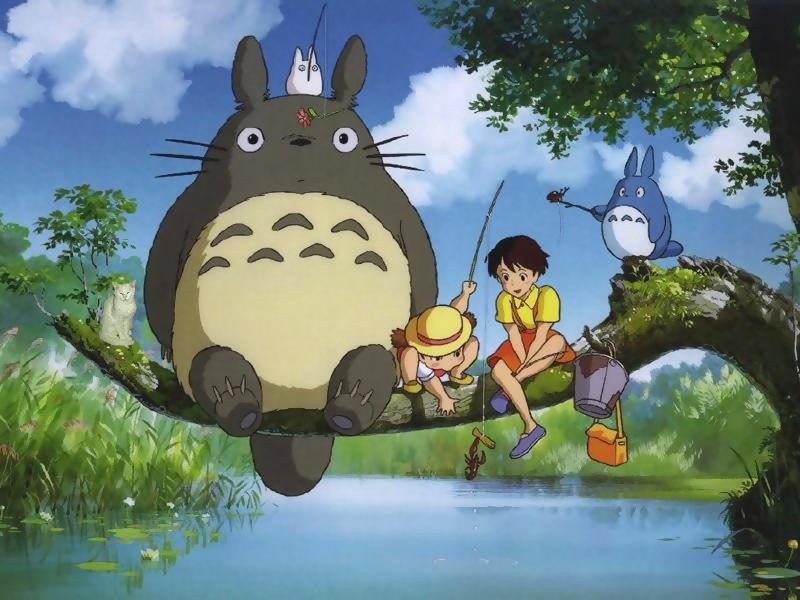 A drawing of the characters from ?My Neighbor Totoro.?
A drawing of the characters from ?My Neighbor Totoro.?
I could pick up a book about dragons and pretty much understand the mythos behind a creature with six limbs. Those kind of dragons have come out of a culture in which I grew up. It makes sense to me inherently. But when you talk to someone from East Asia (or even a biologist), they will not be able to accept the idea of a dragon with a ridiculous number of limbs in the same way I can.
What I am trying to say is this: much of the fascination ?westerners? have with Totoro is based on the creature?s unfamiliar qualities. People always ask ?what is it?? because Totoro is so far outside our inherent ?western? cultural understandings.
And instead of construing the movie into a tale about a ?god of death? that basically kills the main characters and their family, we should instead try to understand the worldview and culture that Miyazaki comes from. I find it much more interesting. Plus, I can finally get back to just enjoying My Neighbor Totoro?for probably the thousandth time.
